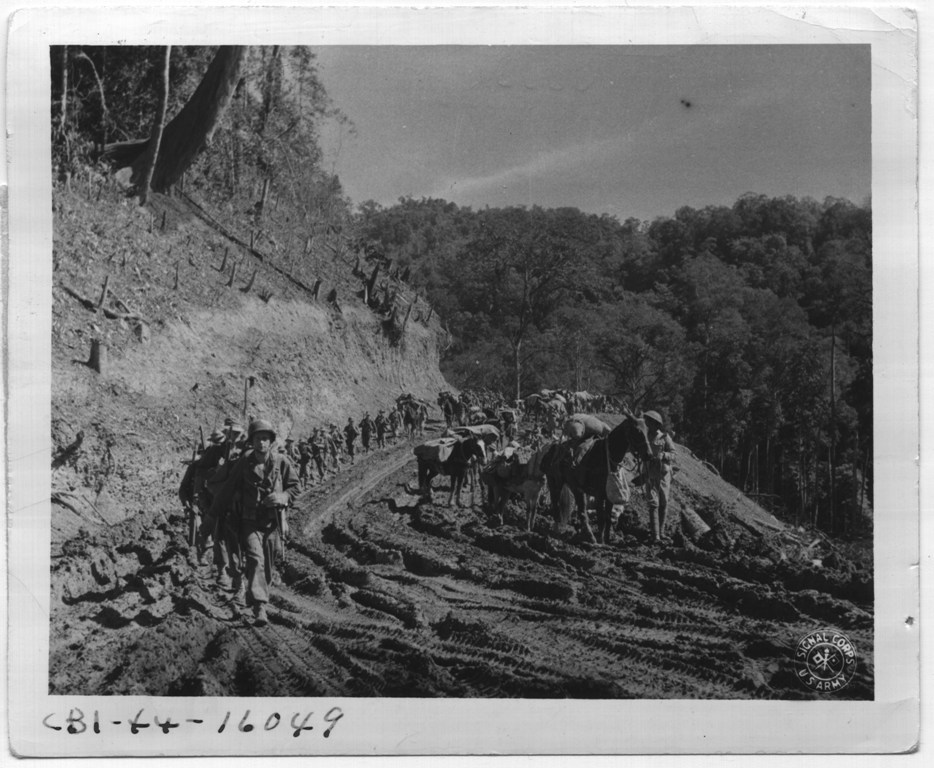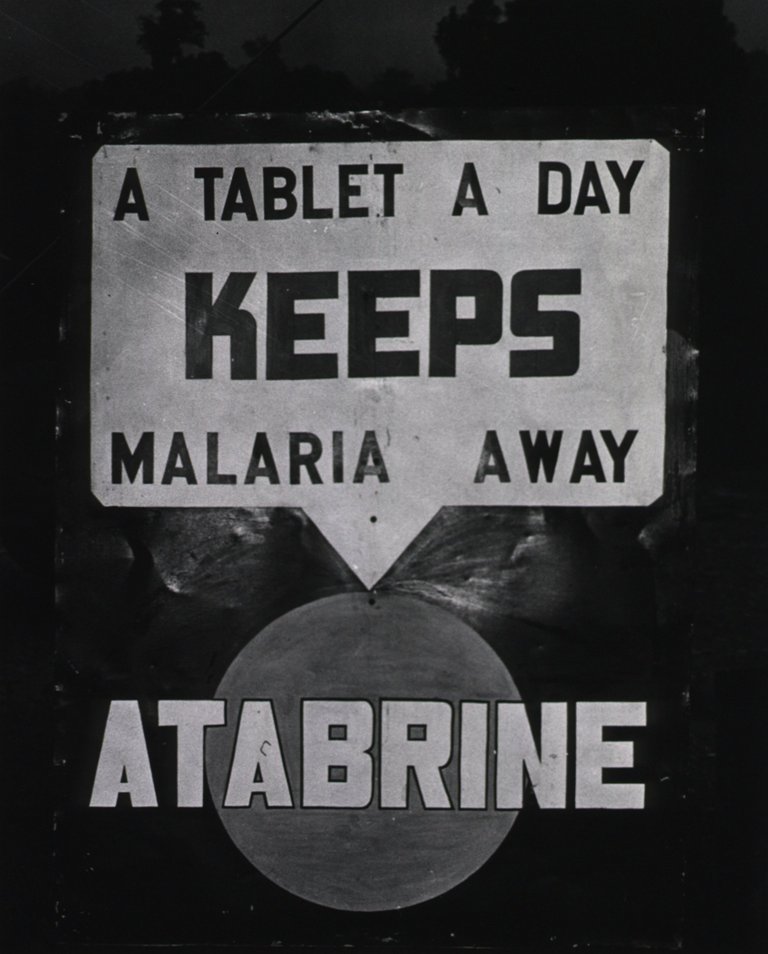SciTech Tuesday: The Effects of Tropical Disease on Merrill’s Marauders

Merrill’s Marauders and Chinese troops march side by side down the Ledo Road, February 1944. Image courtesy of the National Archives.
Seventy years ago on February 24, 1944, Merrill’s Marauders began operations in Burma. Named for commanding General Frank D. Merrill, the special light infantry unit was charged with protecting vital supply routes to China. Working behind enemy lines and frequently outnumbered by Japanese forces, the Marauders relied on flexibility, versatility and the element of surprise. Moving stealthily through dense jungle and over extremely challenging terrain, the unit used pack mules to transport weapons, gear and supplies.
Even during the dry season, oppressive humidity pervaded; men discovered their weapons quickly rusted if not oiled and completely disassembled on a daily basis and found their clothing in a constant state of perpetual dampness. The Marauders faced an environment ripe with tropical disease from mosquito-borne malaria to typhus-laden mites. Provided with only one 2,830 calorie K-ration per day, undernourished men under extreme physical demands were highly susceptible to infectious disease. Cases of dysentery were rampant with shortages of chlorine-based halazone water purification tablets. From February to June 1944, 1,970 Marauders succumbed to disease in comparison with 424 battle casualties.

Malaria control campaign in Ledo, 1945. Image courtesy of the U.S. National Library of Medicine.
Casualties due to infectious disease were extremely common in tropical theaters. With complex life cycles spread by host organisms, many microbial diseases proved difficult to both prevent and to treat. While newly-made penicillin proved effective in combating bacterial infections, pervasive tropical diseases like malaria and dysentery could not be treated with antibiotics. Both are attributed to a special group of single-celled microorganisms called protists. Unlike bacteria protists have both a nucleus and membrane-bound organelles and because of different cell structure and physiology, protists are not susceptible to antibiotics. Preventing tropical disease often involves controlling the host that carries the disease from person to person. For example malaria, caused by the genus Plasmodium, is transmitted by the female Anopheles mosquito. The use of repellent in combination with sleeping nets is highly effective in preventing malaria.
Merrill’s Marauders, constantly on the move in damp, soggy conditions, had little time for mosquito netting or the constant application of insect repellent. Troops did have available the anti-malarial drug, Atabrine. While Atabrine was effective in preventing severe infection when taken regularly, approximately 80% of Marauders suffered at least one malaria attack.
Post by Annie Tête, STEM Education Coordinator
- Posted :
- Post Category :
- Tags :
- Follow responses to this entry through the RSS 2.0 feed. You can skip to the end and leave a response. Pinging is currently not allowed.




Leave a Reply